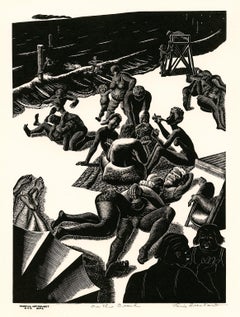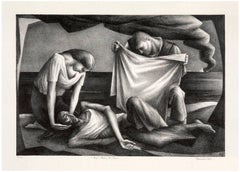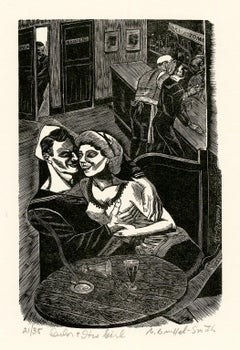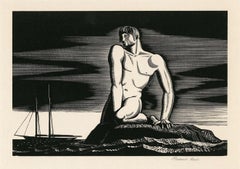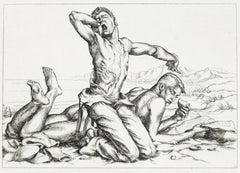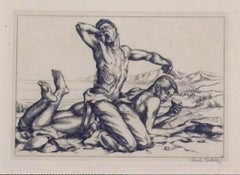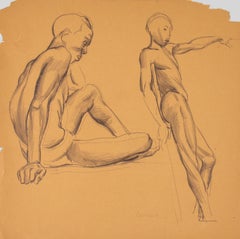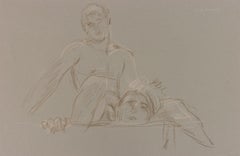Items Similar to 'Two Boys On A Beach, No. 1' — Erotic Realism
Want more images or videos?
Request additional images or videos from the seller
1 of 3
Paul Cadmus'Two Boys On A Beach, No. 1' — Erotic Realism1935
1935
$7,200
£5,596.14
€6,336.36
CA$10,287.42
A$11,200.58
CHF 5,864.48
MX$134,444.15
NOK 74,013.20
SEK 69,399.96
DKK 47,317.65
About the Item
Paul Cadmus, 'Two Boys On A Beach, No. 1', etching, 1938, edition 75, Johnson & Miller 85. Signed in pencil and initialed in the plate in the lower right image corner. Annotated by the artist 'for Frank - 1940' and 'Two Boys On A Beach . 1938 Edition of 75 15.00" in pencil, on the bottom sheet margin.
A superb impression with all the fine details printing clearly, on cream wove paper; the full sheet with margins (1 1/2 to 2 1/8 inches), in excellent condition. Matted to museum standards, unframed.
Plate size 5 3/16 x 7 1/8 inches (132 x 181 mm); sheet size 8 13/16 x 10 1/2 inches (224 x 267 mm).
Impressions of this work are in the permanent collections of the Des Moines Art Center, de Young Fine Arts Museums of San Francisco, Flint Institute of Arts, Lowe Art Museum (University of Miami, McNay Art Museum, Portland Art Museum, Smithsonian American Art Museum, Stanford University, UC Santa Barbara Art Museum, University of Connecticut, Utah Museum of Fine Arts, and the Whitney Museum of American Art.
- Creator:Paul Cadmus (1904-1999, American)
- Creation Year:1935
- Dimensions:Height: 9.13 in (23.2 cm)Width: 19.19 in (48.75 cm)
- Medium:
- Movement & Style:
- Period:
- Condition:
- Gallery Location:Myrtle Beach, SC
- Reference Number:Seller: 1034511stDibs: LU532315626582
About the Seller
5.0
Recognized Seller
These prestigious sellers are industry leaders and represent the highest echelon for item quality and design.
Platinum Seller
Premium sellers with a 4.7+ rating and 24-hour response times
Established in 1995
1stDibs seller since 2016
328 sales on 1stDibs
Typical response time: 1 hour
Associations
International Fine Print Dealers Association
- ShippingRetrieving quote...Shipping from: Myrtle Beach, SC
- Return Policy
More From This Seller
View AllOn the Beach (Coney Island, New York) — 1930s Graphic Modernism, WPA
By Lou Barlow
Located in Myrtle Beach, SC
Lou Barlow (Louis Breslow), 'On the Beach' (Coney Island) wood engraving, c. 1937, edition c. 25. Signed and titled in pencil. Stamped 'FEDERAL ART PROJECT NYC WPA' in the bottom left margin. A fine, richly-inked impression, with all the fine lines printing clearly, on cream wove paper, with full margins (1 1/2 to 3 inches), in excellent condition. Matted to museum standards, unframed. Scarce.
Image size 11 x 8 1/8 inches; sheet size 16 x 11 3/8 inches.
Created during the Great Depression for the Works Progress Administration (WPA), Federal Art Project, New York City.
Impressions of this work are in the permanent collections of the Amon Carter Museum of Art, Illinois State Museum, and the New York Public Library.
ABOUT THE IMAGE
Due to Coney Island's proximity to Manhattan, Brooklyn, and other New York boroughs, it began attracting vacationers in the 1830s and 1840s. Most of the vacationers were wealthy and went by carriage roads and steamship services that reduced travel time from a formerly half-day journey to two hours. By the late 1870s, the development of Coney Island's amusement park attractions and hotels drew people from all social classes. When the Brooklyn Rapid Transit Company electrified the steam railroads and connected Brooklyn to Manhattan via the Brooklyn Bridge at the beginning of the 20th century, Coney Island turned rapidly from a resort to an accessible location for day-trippers seeking to escape the summer heat in New York City's tenements. In 1915, the Sea Beach Line was upgraded to a subway line, and the opening of the Stillwell Avenue station in 1919 ushered in Coney Island's busiest era. On the peak summer days, over a million people would travel to Coney Island. In 1937, New York City purchased a 400-foot-wide strip of land along the shoreline to allow the boardwalk to be moved 300 feet inland. At this point, Coney Island was so crowded on summer weekends that parks commissioner Robert Moses...
Category
1930s American Modern Figurative Prints
Materials
Woodcut
'From the Sea' — Mid-Century American Modernism
By Benton Murdoch Spruance
Located in Myrtle Beach, SC
Benton Spruance, 'From the Sea' also 'From the Sea — Pieta', lithograph, editions 30, 35, 1943. A superb, richly inked impression, on off-white wove paper; the full sheet, with decke...
Category
1940s American Modern Figurative Prints
Materials
Lithograph
'Sailor and His Girl' —Mid-Century Modernism, WWII
By Bernard Brussel-Smith
Located in Myrtle Beach, SC
Bernard Brussel-Smith, 'Sailor and His Girl', wood engraving, 1941, edition 35. Signed, titled, and numbered '21/35' in pencil. Signed in the block, lower right. A superb, richly-in...
Category
1940s American Modern Figurative Prints
Materials
Woodcut
'The Bather' — Iconic American Modernism
By Rockwell Kent
Located in Myrtle Beach, SC
Rockwell Kent, 'The Bather', wood engraving, 1931, edition 120, Burne Jones 63. Signed in pencil. A brilliant, black impression, on cream, wove Japan paper; the full sheet with margins (2 1/2 to 3 1/4 inches); slight skinning at the top sheet edge, verso, otherwise in excellent condition. Archivally matted to museum standards, unframed.
Image size 5 3/8 x 7 7/8 inches (137 x 200 mm); sheet size 11 1/8 x 14 1/2 inches (283 x 368 mm).
Impressions of this work are held in the following public collections: Burne Jones Collection (Illinois), Chazen Museum of Art, Chegodaev Collection (Moscow), Kent Collection (New York), National Gallery of Art, Philadelphia Museum of Art; SUNY Plattsburg Art Museum, Princeton University Library, Pushkin Museum (Moscow), Smithsonian American Art Museum, Spector Collection (New York), University of Illinois.
ABOUT THE ARTIST
Rockwell Kent (1882-1971), though best known as a painter, graphic artist, and illustrator, pursued many careers throughout his life, including architect, carpenter, explorer, writer, dairy farmer, and political activist. Born in Tarrytown, New York, Kent was interested in art from a young age. These ambitions were encouraged by his aunt Jo Holgate, an accomplished ceramicist. Jo came to live with the family after Kent’s father passed away in 1887 and took him to Europe as a teenager, undoubtedly kindling his interest in exploring the world.
Kent attended the Horace Mann School in New York City, where he excelled at mechanical drawing. His family’s financial circumstances prevented him from pursuing a career in the fine arts; however, after graduating from Horace Mann in 1900, Kent decided to study architecture at Columbia University.
Before matriculating at Columbia, Kent spent the first of three consecutive summers studying painting at William Merritt Chase’s art school in Shinnecock Hills, Long Island. There he found a community of mentors and fellow students who encouraged him to pursue his interest in art. At the end of Kent’s third summer at Shinnecock, Chase offered him a full scholarship to the New York School of Art, where he was a teacher. Kent began taking night classes at the art school in addition to his architecture studies but soon left Columbia to study painting full-time. In addition to Chase, Kent took classes with Robert Henri and Kenneth Hayes Miller, where his classmates included the artists George Bellows and Edward Hopper.
Kent spent the summer of 1903 assisting the eccentric painter Abbott Handerson Thayer at his studio in Dublin, New Hampshire—a position he secured through the recommendation of his Aunt Jo. Thayer’s naturalist lifestyle and almost mystical appreciation for natural phenomena greatly influenced Kent; he returned to Dublin for many years to visit Thayer and his family. Thayer gave the young artist time to pursue his work, and that summer Kent painted several views of the New Hampshire landscape, including Mount Monadnock...
Category
1930s American Modern Nude Prints
Materials
Woodcut
'Sea And Sky' — 1930s Modernism
By Rockwell Kent
Located in Myrtle Beach, SC
Rockwell Kent, 'Sea and Sky', wood engraving, edition 150, 1931 (published 1932). A brilliant, richly-inked impression on cream wove Japan; the full sheet with margins (2 to 2 1/2 in...
Category
1930s American Modern Nude Prints
Materials
Woodcut
'Spiderboy' — American Realism, New York City
By James Allen
Located in Myrtle Beach, SC
James Allen, 'Spiderboy', 1937, etching, edition 40, Ryan 86. Signed in pencil. A superb, richly-inked impression, on cream laid paper, with full margins (1 1/4 to 2 7/8 inches). A s...
Category
1930s American Realist Figurative Prints
Materials
Etching
You May Also Like
Two Boys on a Beach
By Paul Cadmus
Located in New York, NY
Paul Cadmus
Two Boys on a Beach
1938/1979
Signed, titled, and numbered in pencil, recto; Also blindstamped, l.l.; Initialed in plate, l.r.
Etching (Edition of 35)
18 x 14.5 inch...
Category
1930s Contemporary Prints and Multiples
Materials
Etching
Price Upon Request
Paul Cadmus Signed Original Etching, 1938 - “Two Boys on a Beach No. 1"
By Paul Cadmus
Located in Phoenix, AZ
Original Etching in excellent condition by New York artist Paul Cadmus (1904-1999).
Signed in pencil lower right. Created 1938.
Presents in a simple black frame, archivally matted. ...
Category
Mid-20th Century Figurative Prints
Materials
Etching
Male Model–Two Views
By Paul Cadmus
Located in New York, NY
Male Model–Two Views
Signed, l.c.
Charcoal on buff paper
13 x 13 inches
This work is offered by ClampArt in New York City.
Category
20th Century Contemporary Drawings and Watercolor Paintings
Materials
Paper, Charcoal
Study for David and Goliath
By Paul Cadmus
Located in New York, NY
Study for David and Goliath
c. 1971
Signed, u.r.
Pastel on paper
12 x 19 inches (30.5 x 48.3 cm)
This work is offered by CLAMP in New York City.
Category
1970s Contemporary Drawings and Watercolor Paintings
Materials
Paper, Pastel
Untitled (Backs) - Vintage Polaroid Inspired Drawing of Two Boys at the Beach
By Rick Sindt
Located in Chicago, IL
This untitled work by Rick Sindt is a small graphite drawing of two male figures with their backs to the viewer. Their focus is something out of our viewin...
Category
2010s Contemporary Figurative Drawings and Watercolors
Materials
Panel, Graphite
[Bruce Sargeant (1898-1938)] Two Men on Beach, Painting by Mark Beard
By Mark Beard
Located in New York, NY
[Bruce Sargeant (1898-1938)] Two Men on Beach is a painting by the artist Mark Beard which depicts two men in speedos standing on a beach.
n.d.
Signed i...
Category
Early 2000s Contemporary Paintings
Materials
Canvas, Oil
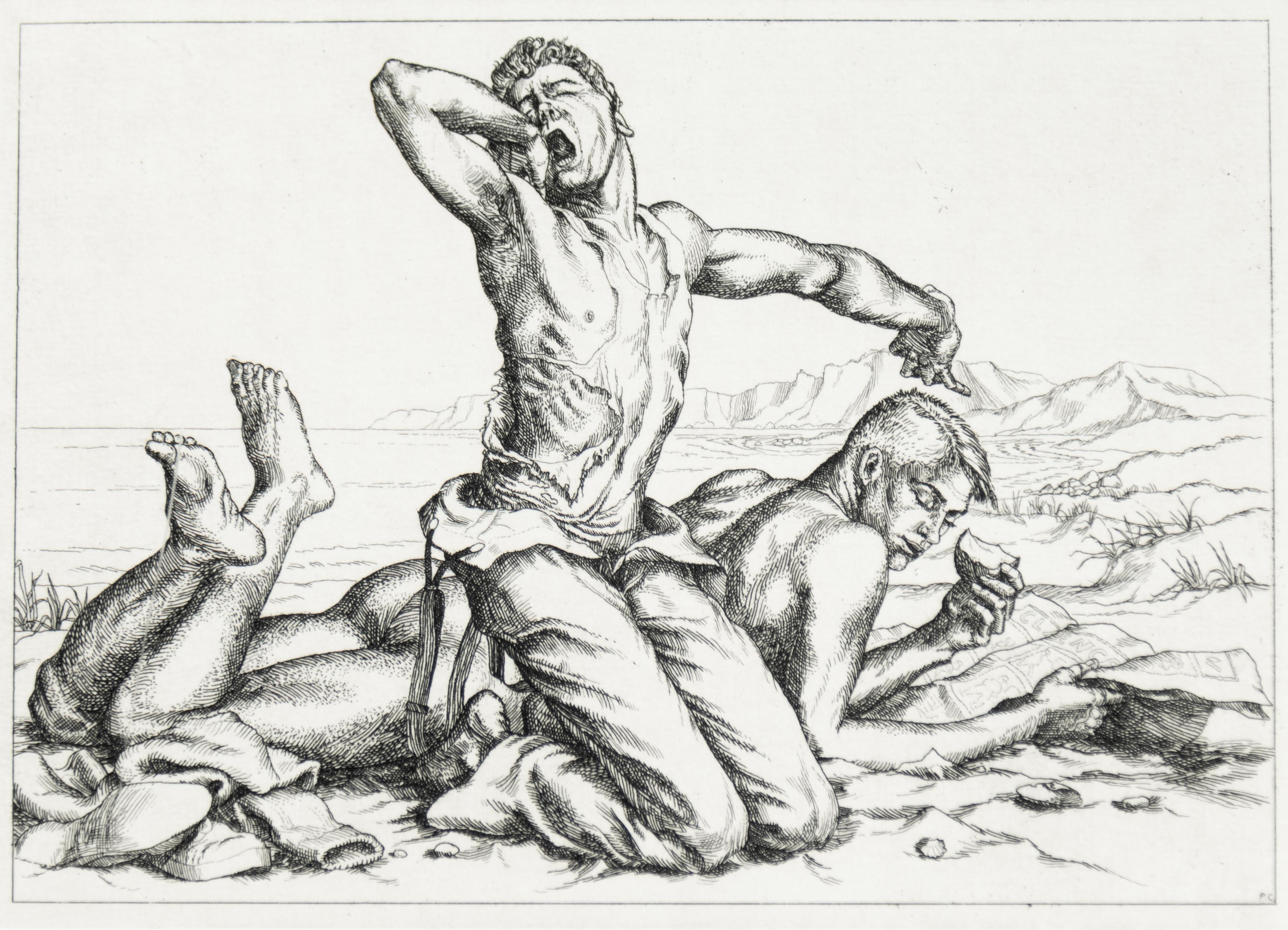
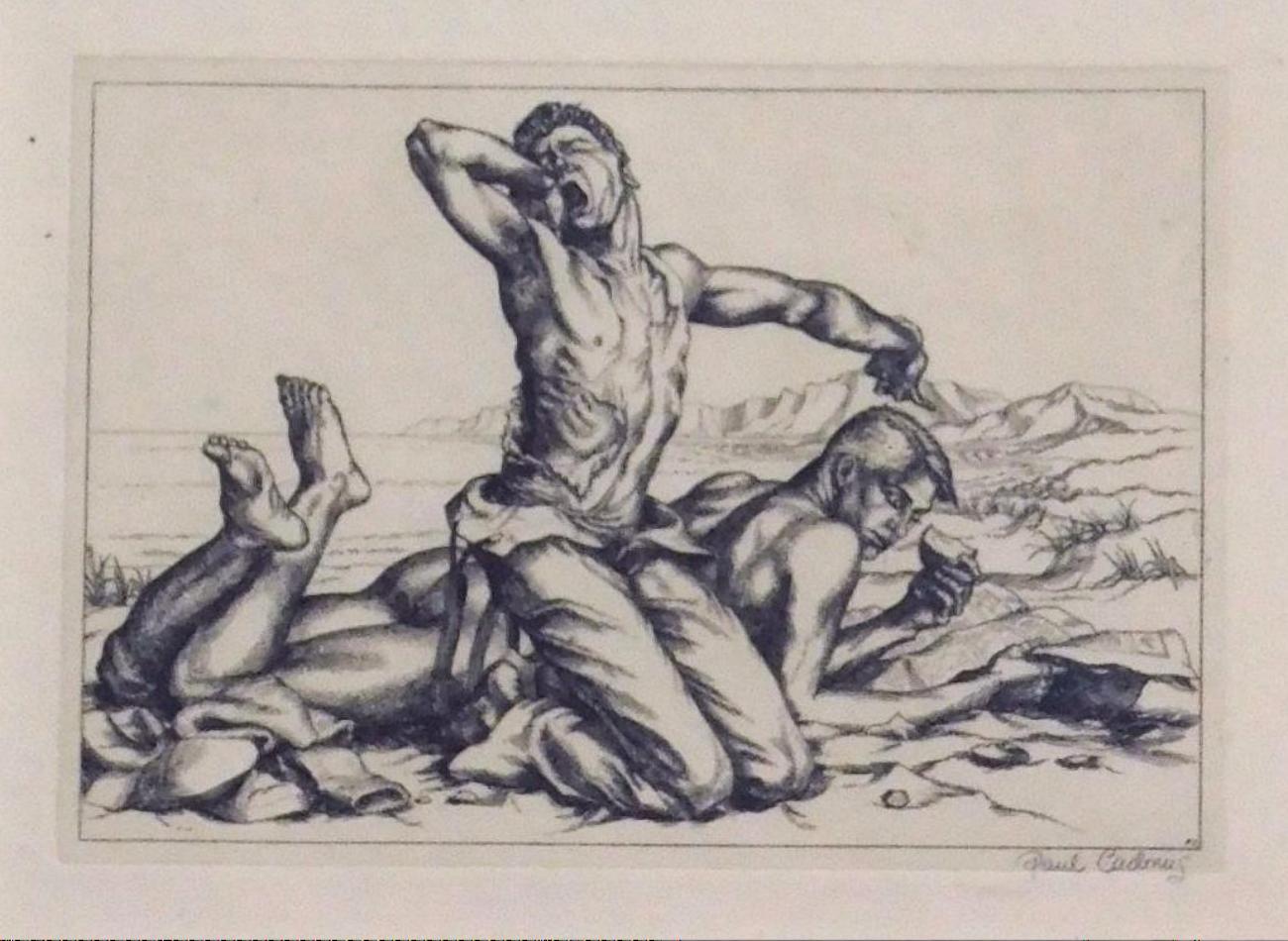
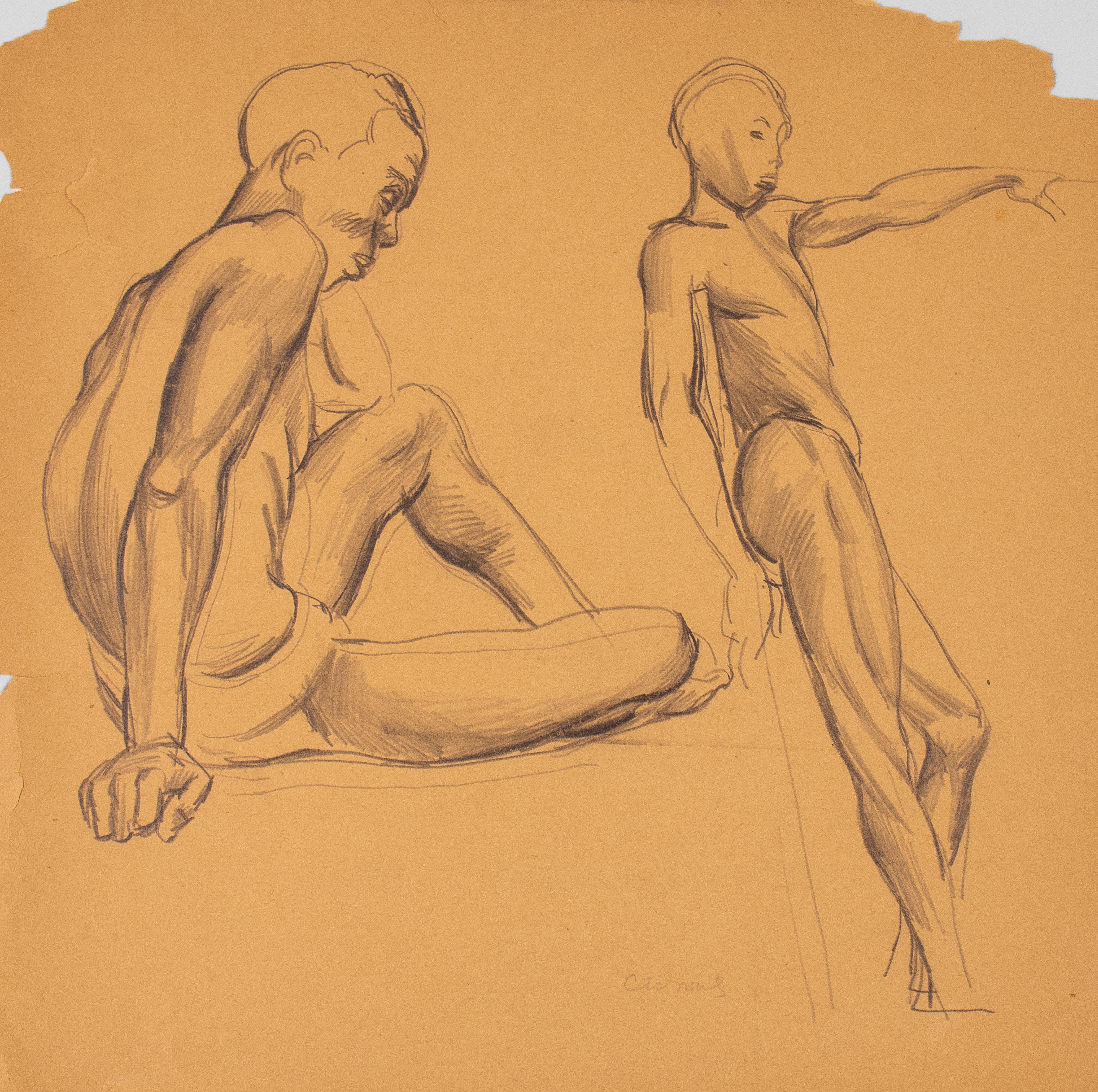
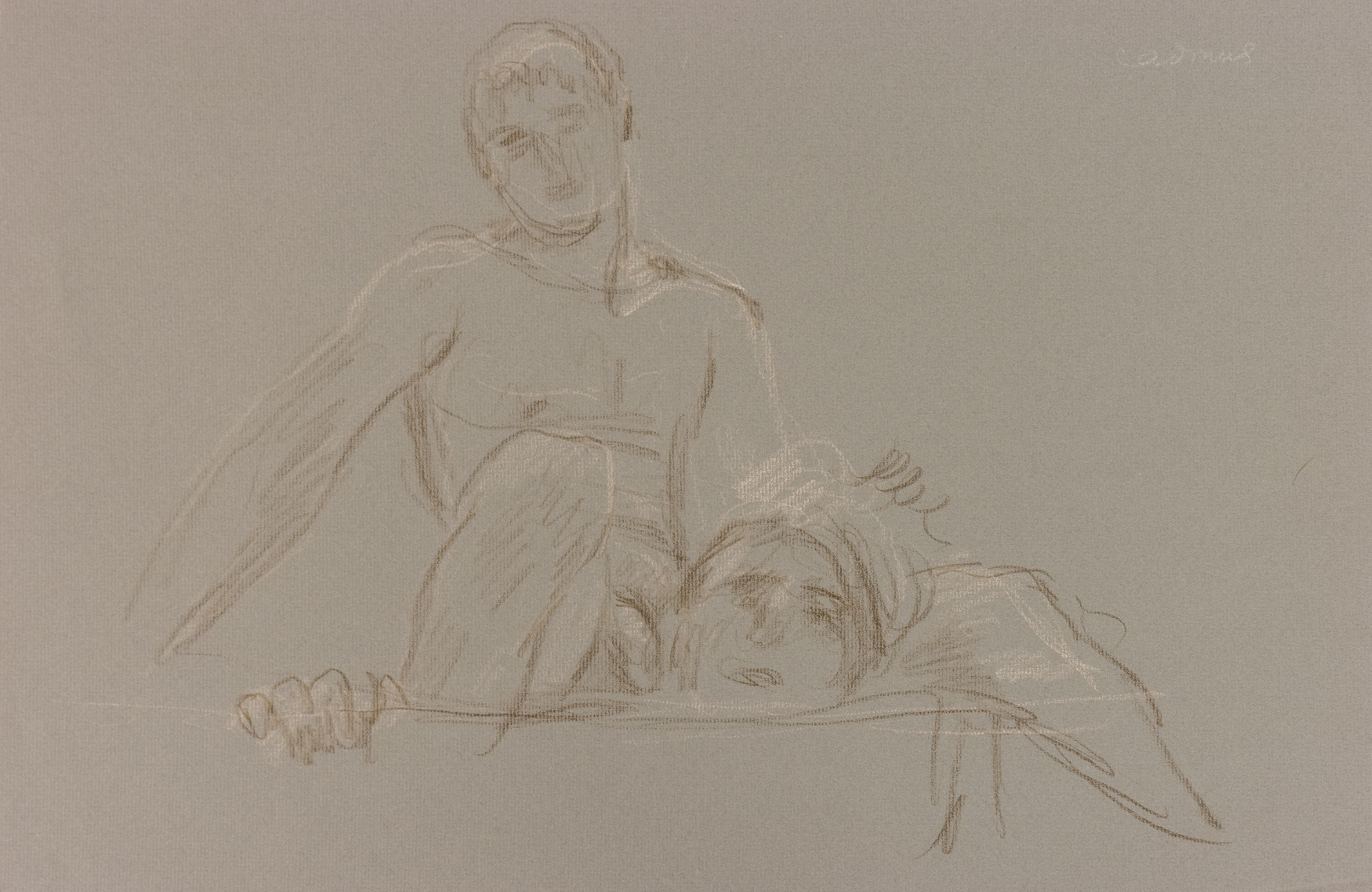
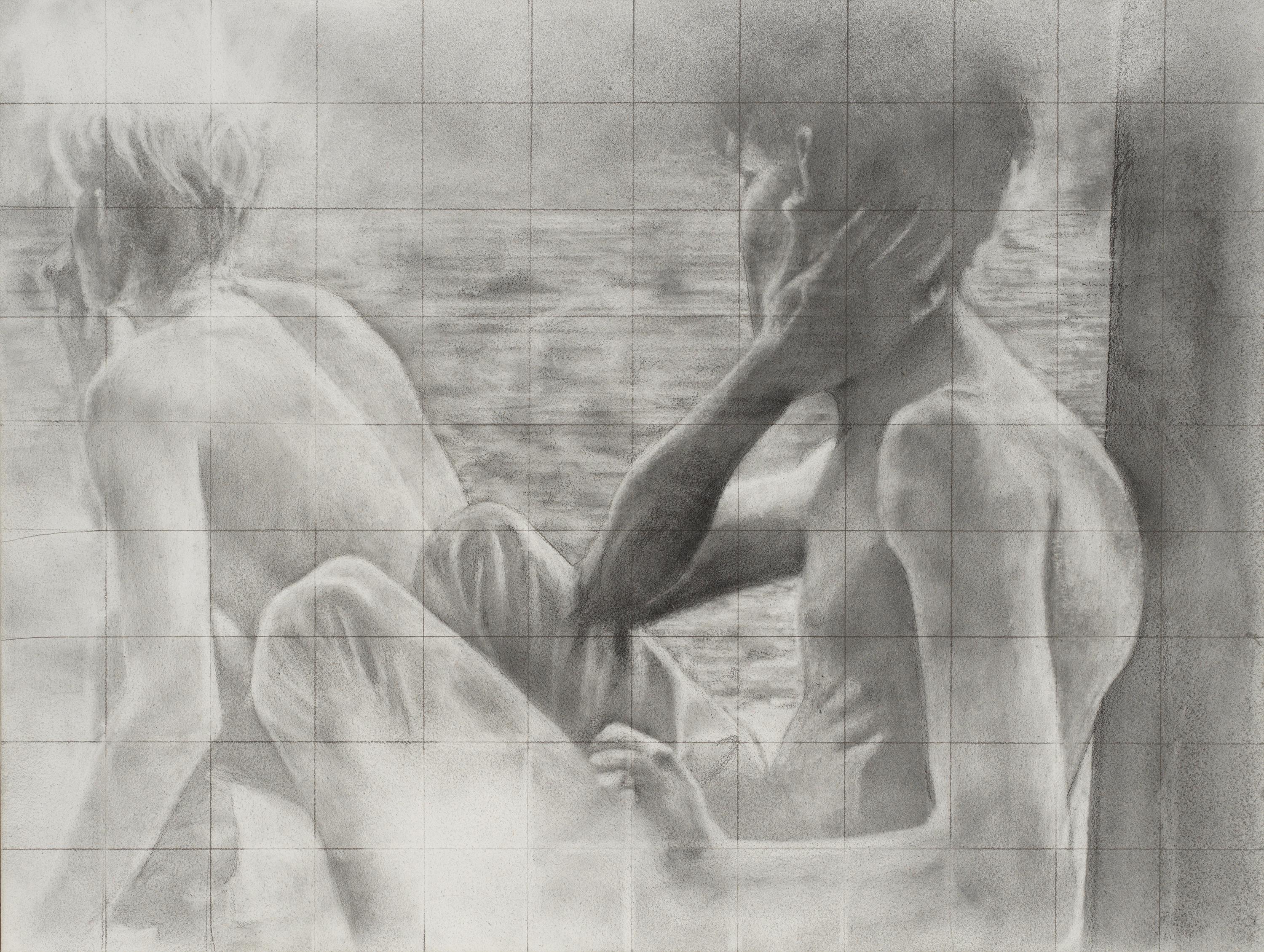
![[Bruce Sargeant (1898-1938)] Two Men on Beach, Painting by Mark Beard](https://a.1stdibscdn.com/mark-beard-paintings-bruce-sargeant-1898-1938-two-men-on-beach-for-sale/a_9323/1665678483289/Beard_Two_Men_on_Beach_1200_master.jpg)
